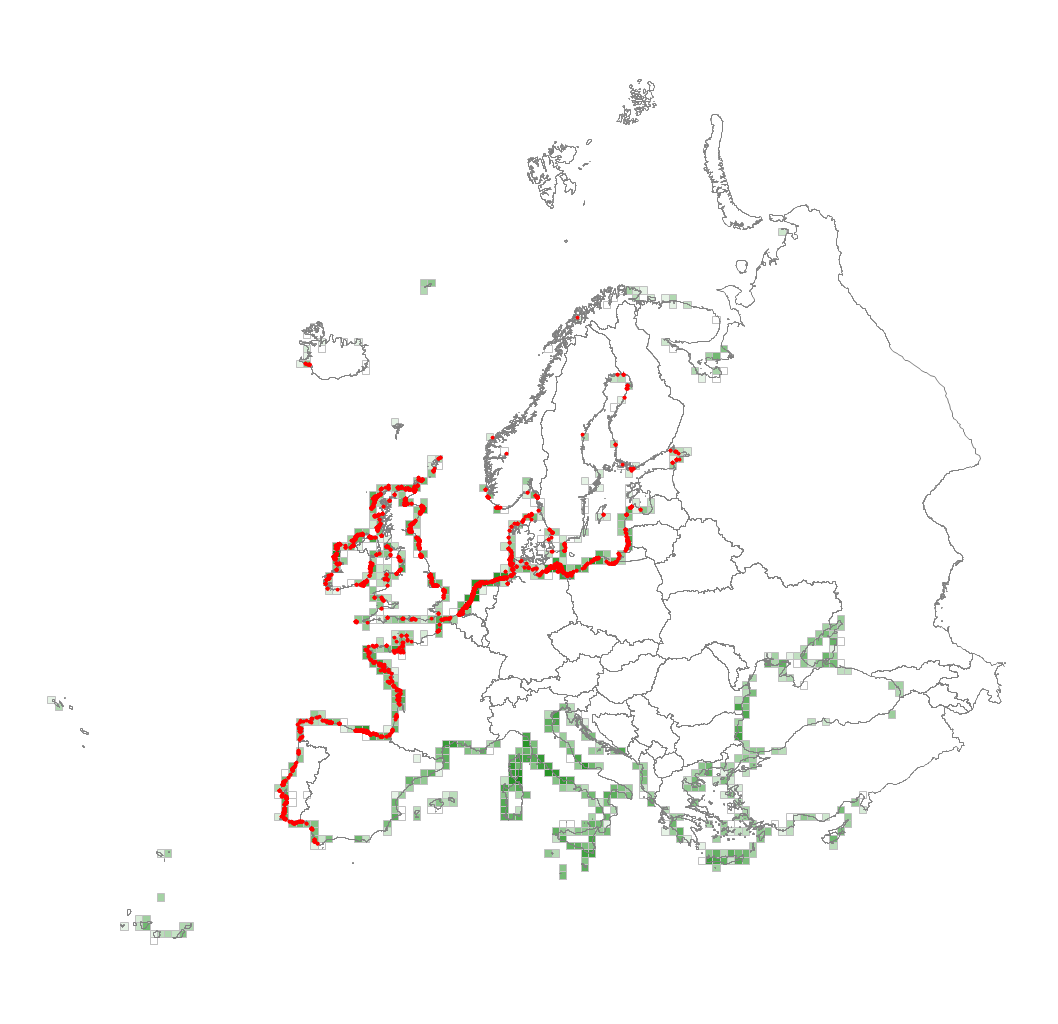N13 Atlantic and Baltic shifting coastal dune
Primary, shifting (so-called 'white') dunes of dynamic coastal sands along the Atlantic, North Sea and Baltic coasts. Early pioneers upshore from the strandline catch sand blown from the beach and initiate foredune, then embryo dune, development stages. They may come and go with subsequent storms, or continue to build higher, mobile dunes that move inland, sometimes to enormous size and in distinct ridges with intervening valleys. Ammophila arenaria is the widespread dominant in the middle to later stages. This grass is especially well-equipped to cope with rapid upbuild and continually shifting sands. Leymus arenarius and ×Ammocalamagrostis baltica play a similar role in colder regions. The latter hybrid is preferred in plantings related to coastal defence measures. The vegetation cover on the sharply-draining, nutrient-poor sand, more or less without organic matter, is typically open with few species, some indicative of the regional temperature contrasts, and some striking fungi. Specialised beetles are also characteristic.
Chytrý M., Tichý L., Hennekens S.M., Knollová I., Janssen J.A.M., Rodwell J.S. … Schaminée J.H.J. (2020) EUNIS Habitat Classification: expert system, characteristic species combinations and distribution maps of European habitats. Applied Vegetation Science 23: 648–675. https://doi.org/10.1111/avsc.12519
Version 2025-10-03, https://doi.org/10.5281/zenodo.16895007.
For the official presentation of the EUNIS Habitat Classification from the European Environment Agency, please see: EUNIS Terrestrial Habitat Classification 2021. The FloraVeg.EU presentation may show modifications and partial updates to the habitat classification.

1.jpg)
3.jpg)
4.jpg)
5.jpg)
6.jpg)
7.jpg)
8.jpg)
9.jpg)
11.jpg)